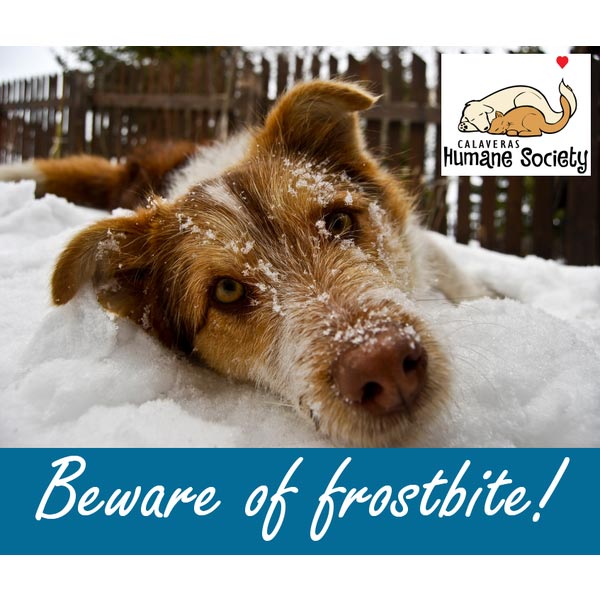How To Handle Potential Frostbite
Folks living in the higher elevations of Calaveras County are dealing with heavier amounts of snow than we’ve seen in recent years. It’s vital to keep pets safe in these conditions, especially if you have one of those dogs who LOVES the snow and would play outside in it for hours if you let him.
Symptoms of frostbite on dogs include the skin becoming very pale with a bluish-white hue due to a lack of blood flow. Ice may also form around the affected area. When the area is touched, it feels very cold or brittle, and may be painful.
If you see signs of frostbite on your dog, take the following steps:
- Warm a towel in a clothes dryer, or using a handheld hair dryer. Do not directly warm the dog with the hair dryer or other heat source.
- Apply the warm towel to the affected areas. Do not squeeze or rub hard, as this can cause more damage. Do not warm an affected area unless you are able to keep the area warmed.
- Use tepid water to warm up the affected areas to a temperature of 100°F (32°C), but no higher than 108°F, as this can cause more damage.
- As the areas thaw, they will redden. If they become dark instead, seek immediate veterinary attention.
- It is always recommended to seek veterinary attention to make sure there is no other damage and that no additional treatment is required.
When the body part is warmed and blood flow returns, the skin becomes red and there is swelling accompanied by peeling. This is very painful and may lead to blisters or skin ulcers. As dog frostbite progresses, the area becomes blackened, which indicates death of the local tissue.
When in doubt, please consult a vet. Stay safe, everyone! ⛄️



